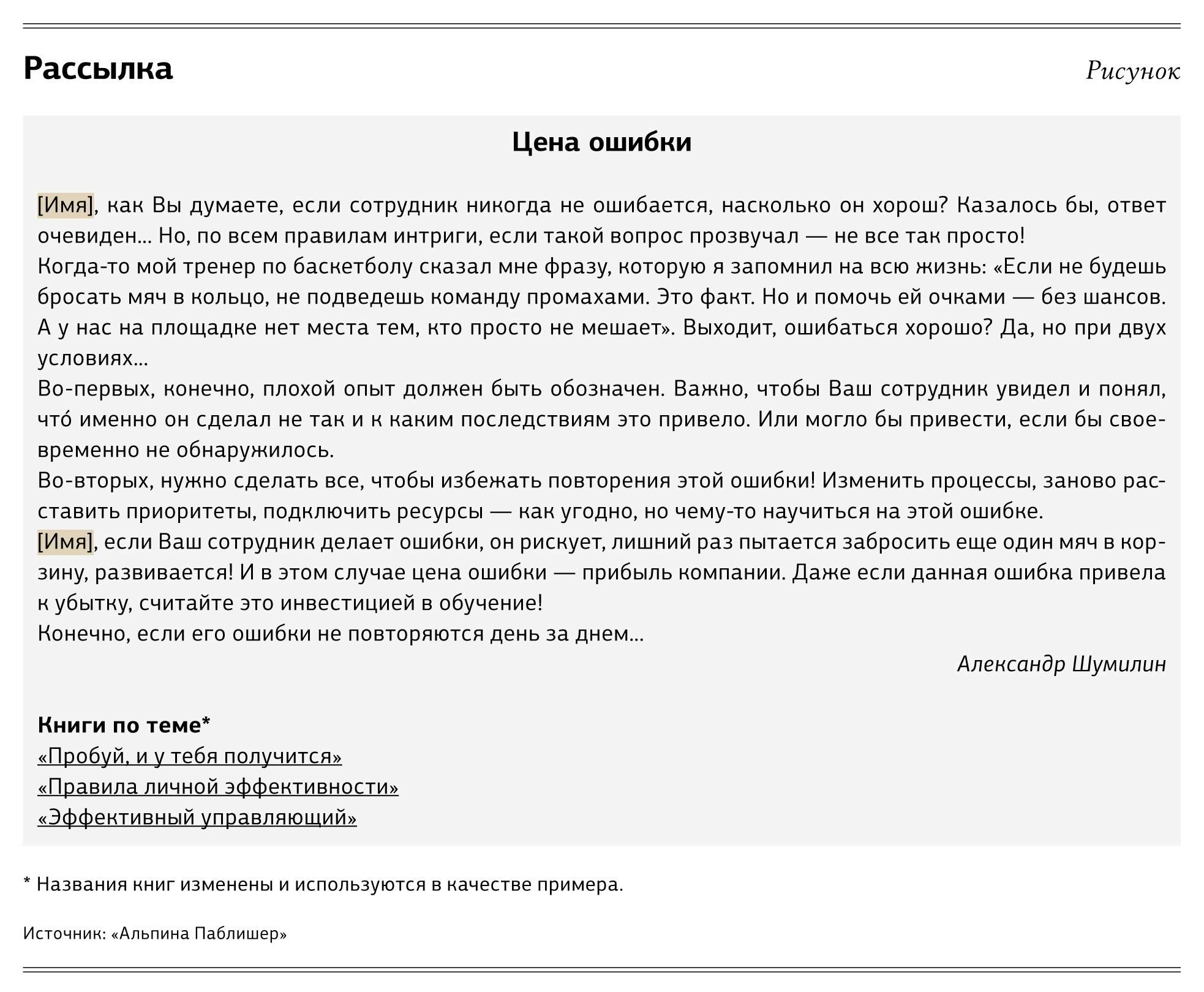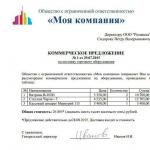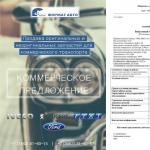How to hook a client in a mass e-mail newsletter? Examples
Our company is engaged in tailoring to order. We are going to do a mass e-mail mailing to the client base and now we are wondering how to increase its effectiveness. I really want each addressee to read the letter to the end. How to draw attention to the message, if there is nothing extraordinary in it? We heard that addressing by name (first name and patronymic) in the text of the letter works well. Is it really possible to make an effective mailing list? How to do this correctly, and what is the optimal number of references by name (first name and patronymic) in one message?
Elena Petrova,
Answer
Alexander Shumilin,
First, write not a text for an e-mail mailing list, but a letter to a friend. Of course, friends are different, but, you must admit, in any case, you will not write to them in a dry and formal language. Moreover, not all friends understand your professional issues, so do not resort to complex terminology in correspondence with them.
Secondly, to launch a mass e-mail distribution, you need to choose the right moment.
Thirdly, your friend is a person, and you just need to address him by name. Finally, with a friend, you need to be as honest as possible. And most importantly: if you want to come to you, call for a visit. Be sure to include in the letter links to go to the site, which will make it easier for the addressee to complete the target action you need. Let's analyze everything in more detail.
Language. Here is an example text of the letter. " Imagine that the future of if not the whole city, then at least the city-forming enterprise depends on you. What similar companies do you know? Let's say you are the leader of one of them. And now you have to decide whether to buy a new fleet of excavators or not. Now imagine that you got a bright and colorful commercial offer of one of the suppliers on 80 (!) Sheets. What feelings will it evoke in you? Say it out loud!» Interesting, right?
When you write a letter, remember that the recipient must be involved in the situation. Just as you are now probably included in this case. A catchphrase like " CPs that include specifications and TOR on 80 pages are not of interest to your customers” is unlikely to hook you.
Immerse your readers in situations, paint pictures for them, evoke emotions in them, while making the point as clear as possible. However, this does not mean that your messages should be twenty-page - short stories written in simple phrases are much more effective in this case (figure).

Right moment. Imagine that you suddenly received a call from a classmate with whom you were not particularly friends at school. And then he just wanted to know how you are doing. “Hmm, something is wrong here,” most of you will think. Such surprises are usually treated with distrust. Therefore, if you suddenly decide to send an email to clients who gave you their e-mail address two years ago, do not expect much trust from them. As a rule, it is formed due to the reputation of the company or the regularity of the mailing. Let's say it makes sense to send letters once a week: if you do it less often, you may be forgotten, if you do it more often, it will be annoying. Getting used to receiving messages from you every Wednesday, a person will not experience anxiety. And if the letter also arrives in the afternoon, the addressee will certainly find time to read it, and not put it off until later.
Appeal. Of course, you know: if you subscribe to the mailing list, indicating your name, then each letter will begin with a personal appeal to you. Such a mailing is called personalized, and it significantly increases the level of trust, since the sender refers to each addressee by name. It is clear that this is just a mail service substituted your name from the database in the body of the letter, but still this option is much better than the impersonal appeal “dear customer”. We use MailChimp for our mailing list, but there are others like AdPlus or UniSender.
The so-called variable data of the subscriber will help to make the newsletter personalized. This, for example, last name, first name, patronymic, company where the addressee works, city and much more; however, the most commonly used variable is [Name]. In other words, if in a letter you need to address the recipient by name, you specify this variable in the right place in the text and the service automatically substitutes the name that the subscriber entered during registration. Let's say the phrase "[Name], do you know..." will change to "Dmitry, do you know...". Based on our experience, I can say that it is optimal to address the addressee by name two or three times. Observations show that the conversion in this case is higher than if you do not use a personal appeal at all or use it too often.
Honesty. There are two important rules here. First, do not deceive customers because they feel it. And if you are counting on long-term communication, then manipulation will only hurt. Moreover, people today are overloaded with unsolicited information, so they often react negatively to it. And even if you sincerely want to sell someone a Ferrari for a couple of hundred dollars, you are unlikely to be believed.
Links. You can write your message in the most correct language, 100% targeted, addressed by name, with three kilograms of usefulness and at the right time; however, if you don't show the recipient exactly what you want from them, the conversion will be close to zero. To buy something from you, find an opportunity to unobtrusively offer it to the addressee or add a hyperlink to the letter, inviting them to your website - there a potential client can learn more about your product or service.





